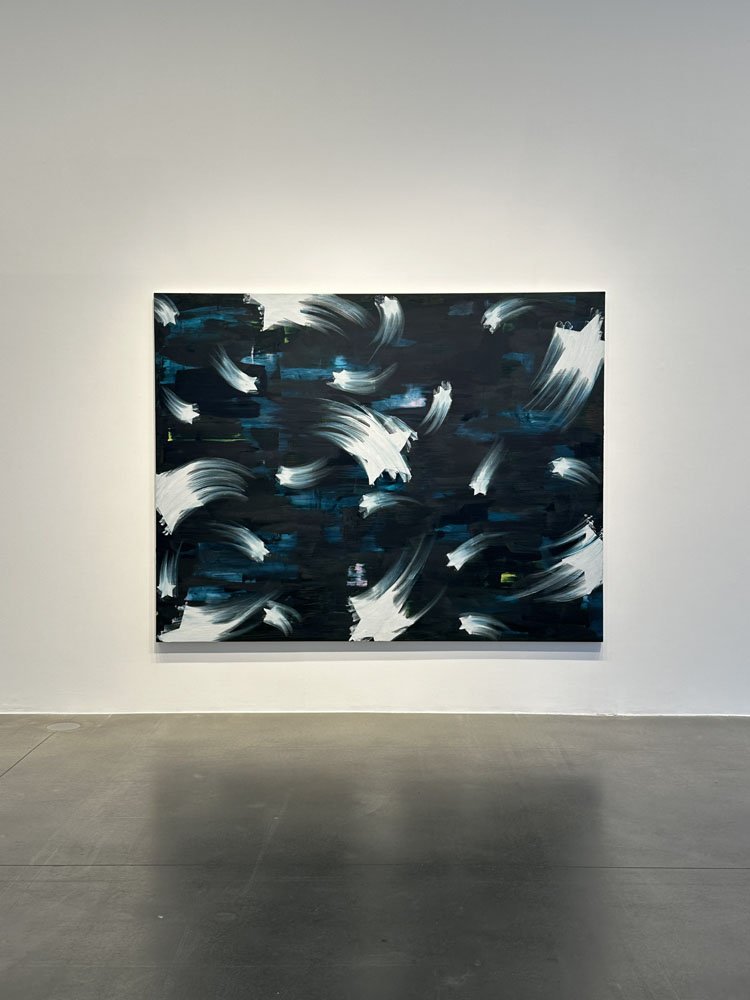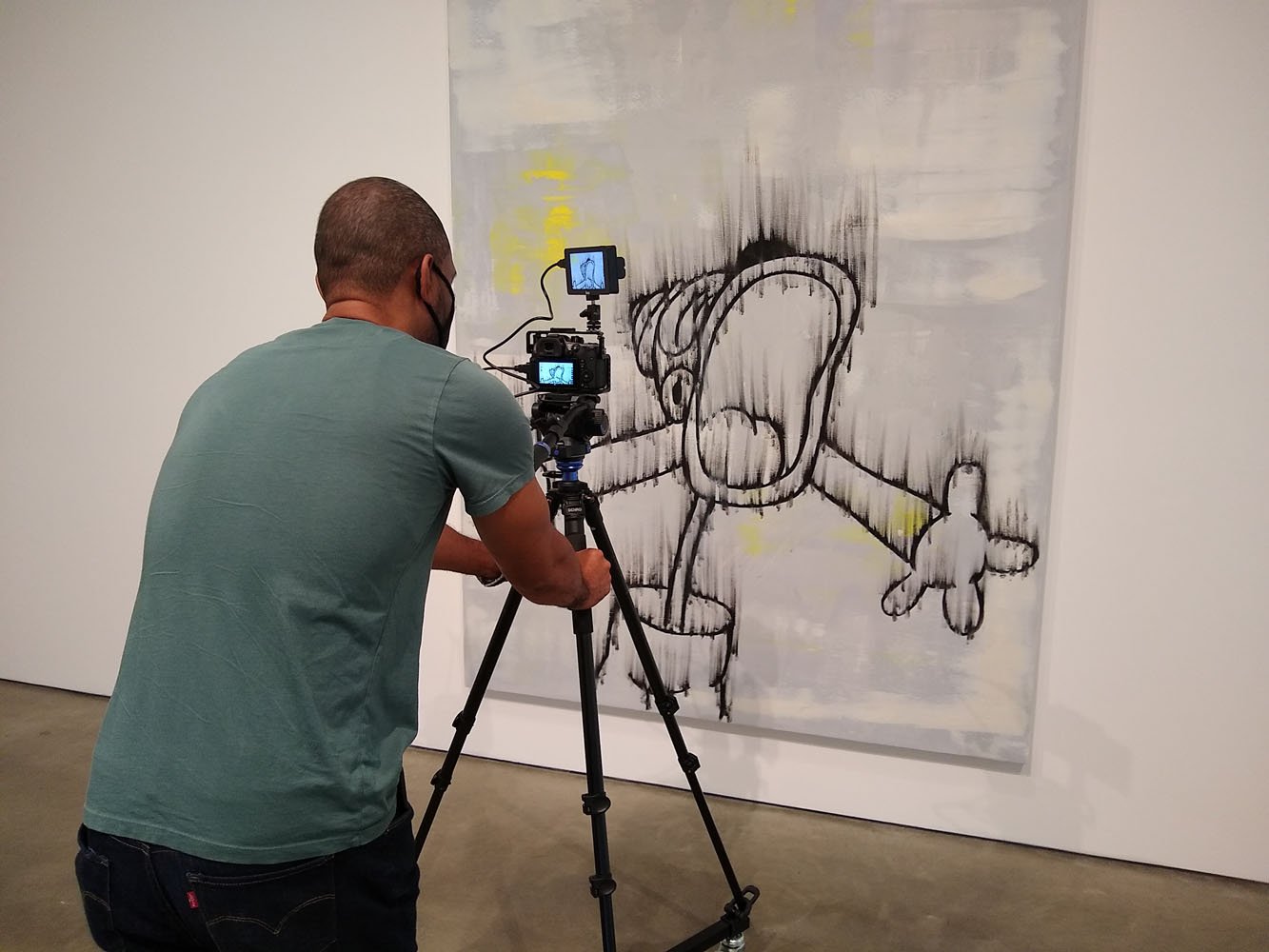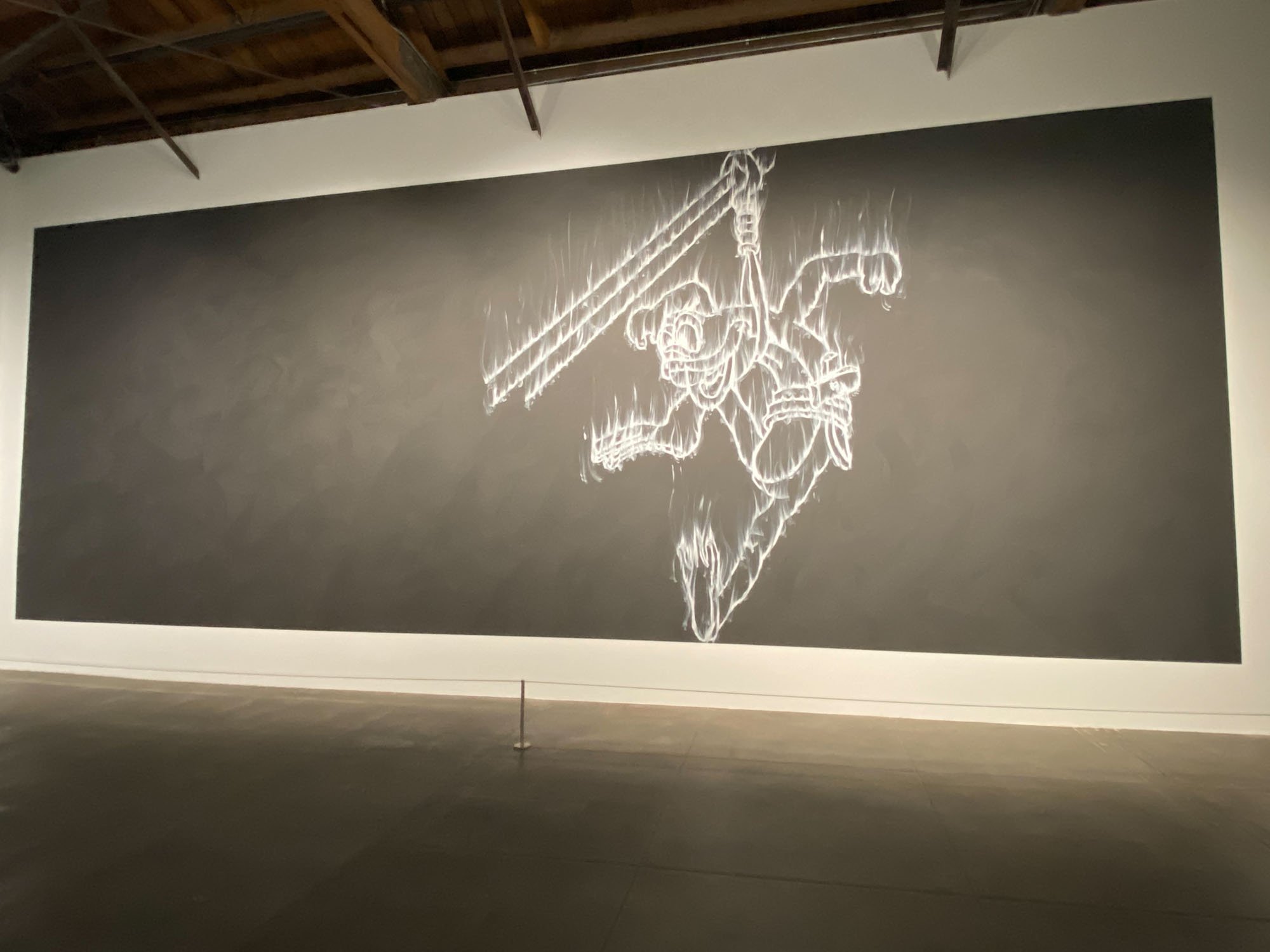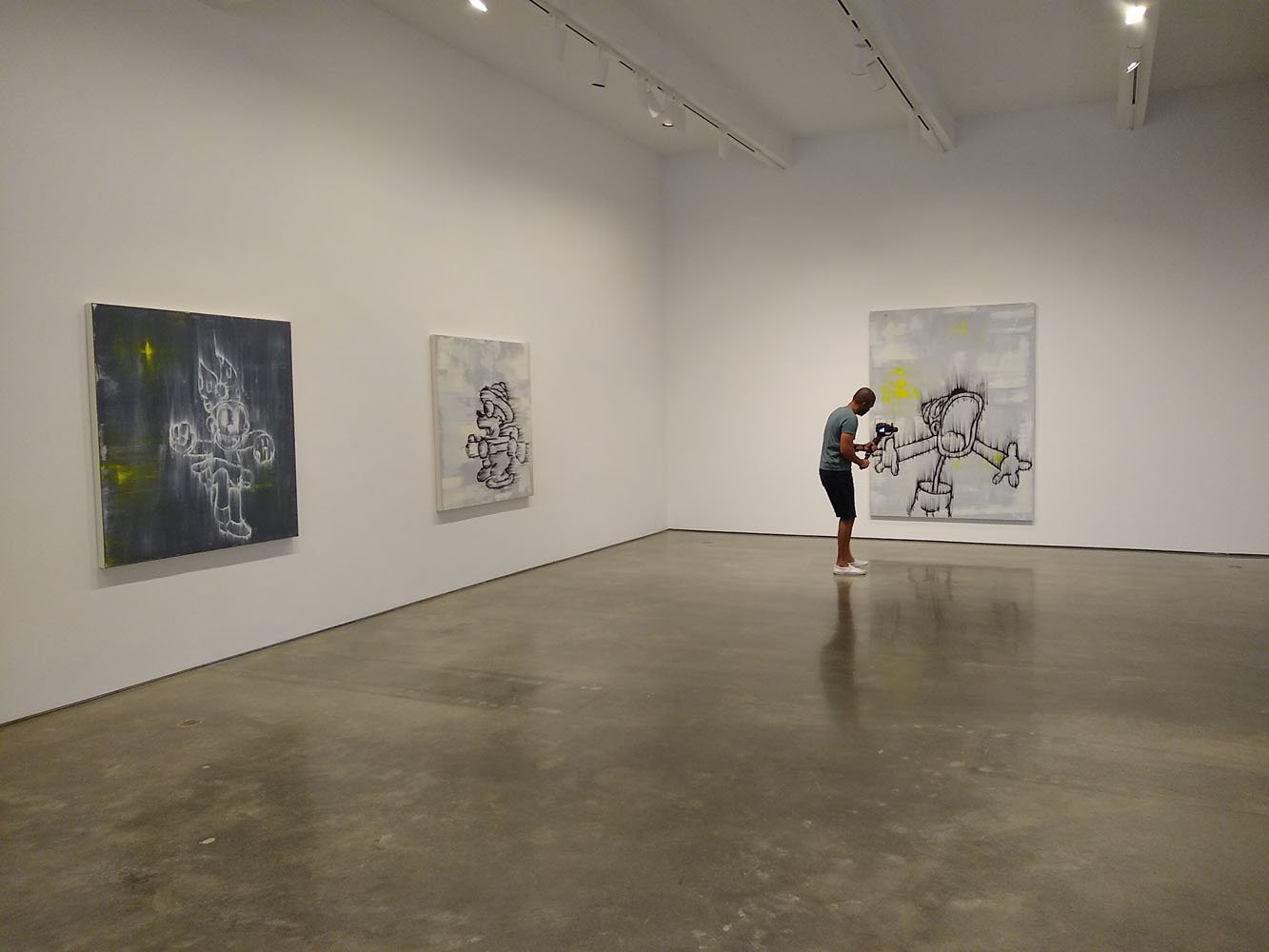Gary Simmons
GARY SIMMONS
Born in New York City in 1964, for over three decades Gary Simmons’ multidisciplinary practice has shed light on the structural racism and social stereotyping that pervades the American narrative. His drawings, paintings, and installations commingle identity, memory, poetics, and rage while helping to illuminate the racial constructions by which public education and popular culture have been besieged. In Simmons’ erasure paintings and drawings, a signature component of his oeuvre, archetypal cartoon characters, text, and architectural motifs are obscured by the furious smudging and erasing he applies, leaving only ghostly traces of the imagery. His evolving practice is performative and site-specific, with large-scale projects inspired by film and media, music, and the visual circuitry that is hardwired within cultural memory.
Simmons emerged early on as a gifted athlete, but his goal of professional baseball was deterred by injuries. Transferring his ambitions to the artistic prowess he displayed at a young age, he discovered the arts, eventually attending the School of Visual Arts in New York. There he worked closely with Jack Whitten and Michael Goldberg, receiving a BFA in 1988. Simmons’ innate interests in minimalism and conceptualism led him to enroll at CalArts, where he continued the pursuit of identifying his unique voice. Mentored there by Charles Gaines, Michael Asher, John Baldessari and others, he thrived among an ethos of collaboration and cross-fertilization that embraced language, cultural politics, and activism. Just before graduation, Simmons mounted his first solo exhibition in Santa Monica, CA. He returned to New York, where his explorations of societal disinformation, racial tropes, and misrepresentation continued.
At the Whitney Museum of American Art in 1993, Simmons’ large-scale chalkboard installation, Wall of Eyes, depicted impish cartoon eyes drawn in chalk on a wall of slate-paint. Feverishly rubbed by the artist’s hand, the sweeping imagery became smudged and dispersed but not extinguished, a metaphor that encapsulates the way racial stereotypes, pain, and living in the margins cannot be erased. The erasure drawings – temporal, gestural, performative – are a kind of action painting hybrid, touching on our collective memory where they exist in both the past and the future. Because they are painted directly on structural walls, the works are removed at the end of an exhibition, relying only on a communal memory to remain extant. In Fade to Black, a 2017 text-based installation for the California African American Museum in Los Angeles, Simmons resurrected the titles of early, oft forgotten, Black-made films that were foundational to the development of American cinema. Throughout the museum lobby, massive black walls covered in historical film titles – the letters painted in a white Courier font – were sullied and blurred by the artist’s hand, an allegory that engages a powerful counternarrative. More recently, Simmons’ installations have become increasingly interactive, providing a wider platform for the examination of race and identity politics.
Gary Simmons lives and works in Los Angeles. His one-person exhibitions include the California African American Museum, Los Angeles, CA; Perez Art Museum, Miami, FL; Museum of Contemporary Art Chicago, IL; Studio Museum in Harlem, NY; Modern Art Museum of Fort Worth, TX; Bohen Foundation, NY; St. Louis Art Museum, MO; Kunsthaus Zürich, SW; Lannan Foundation, Los Angeles, CA; and the Hirshhorn Museum, Washington, D.C. His work was included in the influential exhibition Black Male: Representations of Masculinity in Contemporary American Art at the Whitney Museum, NY, in 1994 as well as exhibitions at the Museum of Modern Art, NY; Menil Collection, Houston, TX; San Francisco Museum of Modern Art, CA; Walker Art Center, Minneapolis, MI; and the Stedelijk Museum, Amsterdam, NE. Simmons participated in the Biennale Arte, 2015, the 56th Venice Biennale, Italy; the 2015 Sharjah Biennial, UAE, and Prospect 3, New Orleans, LA.
Gary Simmons was interviewed at his studio in Alhambra, CA in June 2021, with additional footage from his 2020 show Screaming into the Ether at Metro Pictures, New York and his 2022 show Remembering Tomorrow at Hauser & Wirth, Los Angeles.
“The wall drawings really changed the trajectory of my career for a number of reasons. It’s an attempt to erase a stereotype. And these are all the blurred lines and the kind of abstraction that happens when you attempt to obliterate or erase an image. And there’s bits and pieces and fragments that are left behind, and it forces the viewer to fill in those gaps just the way your memory does.””
“We need to create images that – when you walk into the room – it forces you to stay there. Because everything moves so fast. We have so much technology – everything seems to move at the speed of light. What you really want to do is slow somebody down – there’s something more powerful in having to slow down to look at something and experience it. That’s the reason I think the beauty is very important.”
“One of the things that I learned at Cal Arts was the importance of language and the use of certain phrases – the idea of I versus We versus You. The sense of inclusion, sense of ownership, a sense of being an outsider, insider – those kinds of things were all very much a part of it.”


































